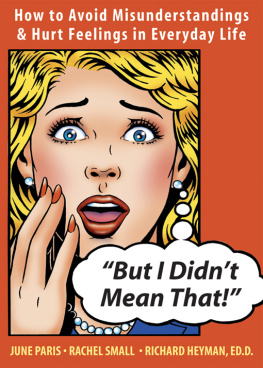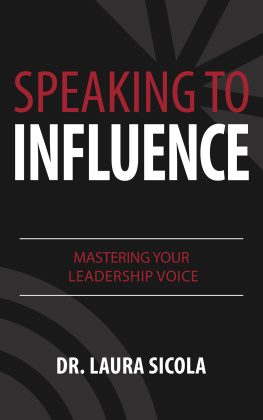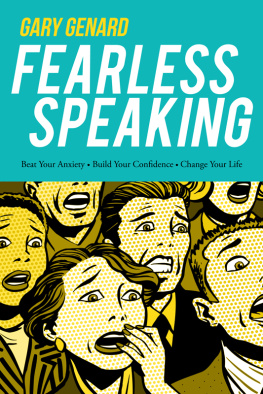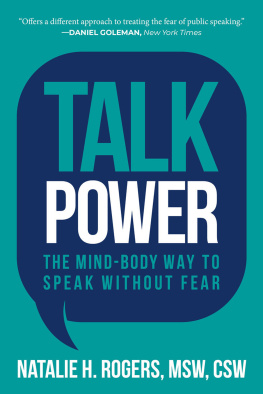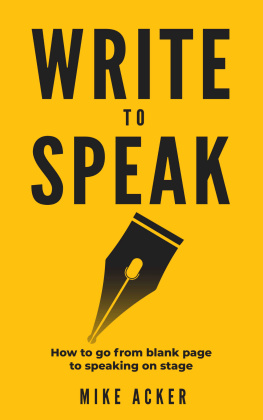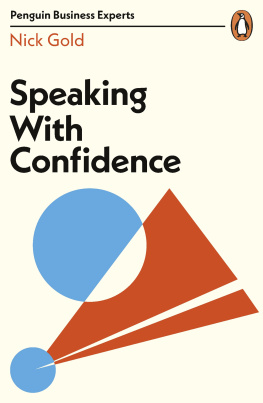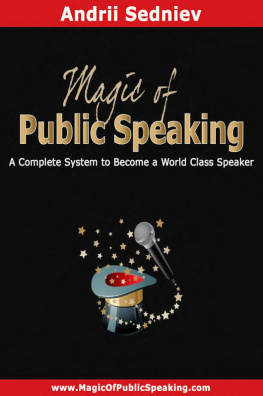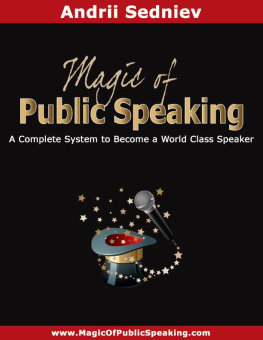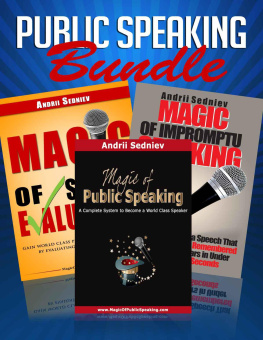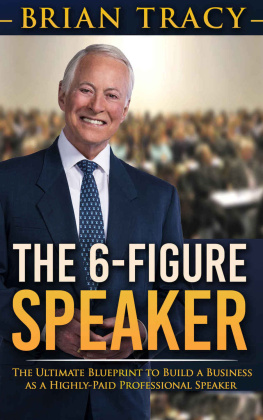This book became a reality due to the tremendous foresight of Michael and Patricia Snell. Literary agents par excellence, they were able to see the intrinsic value in the seed of an idea and make it grow into a full-fledged book. We are grateful for their wisdom and guidance and hope that they are proud of and enjoying the finished product.
We thank all of our family members and friends, who not only encouraged us to write this book but supported us every step of the way. The stories they told us that showed how words can hurt or heal gave us more than enough material for this bookand probably a couple more!
Special thanks to Aileen and Heather Bloom, Junes sister and niece, for their enthusiastic support that spurred us on to complete the project.
Thank you to our publisher, New Harbinger, and to our editor, Melissa Kirk, for seeking and publishing self-help books on communication to help people improve their relationships.
Thank you to all of the people at New Harbinger who helped us with the book, especially Jasmine Star, who did outstanding work helping us make it a well-written, polished, and finished book.
Most importantly, our biggest debt of gratitude is to the One Above, Who gave us the laws of ethical speech in order to bring people closer to each other. He has guided us and inspired us in a multitude of ways to write this book so that we could bring thoughtful communication to everyone.
Rachel Small is a former special education teacher. She is currently the vice president of a flourishing family business.
A freelance writer and writing teacher, June Paris has devoted years of study and training to the elements of ethical speech and how to communicate positively.
Richard Heyman, Ed.D, is a specialist in the use of language in everyday life. He is professor of communication and education at the University of Calgary and president of Richard Heyman Associates, a business communications consulting company. He was the founder and director (until 1988) of the Discourse Analysis Research Group, a think tank devoted to researching language and communication, and he has published more than thirty book chapters and articles on his research. He has more than thirty-five years of experience in communications consulting and has presented his work to professionals, academics, and laypeople.
Making Thoughtful Communication Work for You
Words Can Wound: Amys Story
Theres talk all over town that I beat my son! Amy cried. Even my neighbors believe it. They wont let their kids come over to our house anymore.
In between Amys sobs, Rachel, one of the authors of this book, listened in shock to her friends story. Not long after they moved to town, Amys son, Mike, who was a bit of a daredevil, decided to ride his bike down the basement stairs. Amy confided that Mikes fall had been an ordeal, but his stitches and bruises would heal. What people were saying about her had become the bigger problem. People had looked at Mikes bruises and made the assumption that they werent due to an accident but were inflicted by his mother. No one had stopped to question the truth of that assumption before talking.
Until the talk about Amy died down, Rachel was one of her few supporters. Having known Amy and her family for years, she knew there was no basis to the rumor and was horrified that someone as sweet natured and caring as her friend Amy could be accused of hurting her own child. Although Rachels support was comforting, Amy was still devastated by the unfounded gossip. And while Rachel understood that most people, even good people, like to gossip, she wondered whether they realized how much power their words had to hurt others. Having long been guided by the principles of ethical speech, Rachel knew that there were ways to talk without causing others pain, but it was only after Amys situation brought the issue to the forefront that Rachel decided she had to do something to help others be more thoughtful before speaking.
Ethical Speech Eliminates the Pain
Having been raised in an ethical and devout home, Rachel was trained not to talk for the sake of talking but to consider the purpose of her every word. She grew up with the understanding that every situation can be viewed in more than one way and that rumors start from not seeing the whole picture.
If the people in Amys town had been more aware of the principles of ethical speech, she would have been spared a great deal of pain. People would have checked the facts before condemning Amy as an abusive mother. Instead of gossiping behind Amys back, they would have put their mouths to good use with words of compassion and advice about how to deal with the antics of an overactive child.
Bringing Ethical Speech to Everyone
With Amys story weighing on Rachels mind, an idea for a book that would teach the principles of ethical speech took hold of her imagination. She envisioned a book of stories, like Amys, that would illustrate how much better our lives could be if we consistently followed these principles. Everyone Rachel spoke to encouraged her to write the book, but it was only when she met June that her idea became a reality. June, a writer, shared her unbridled enthusiasm for ethical speech, and she sat Rachel down the very next day to write their first story.
Having discovered and studied the principles of ethical speech on her own, June knew firsthand how dramatically they improve ones life. I used to be known as a motormouth, June says. Id get into all kinds of trouble by saying whatever popped into my head. Ethical speech taught me how to evaluate when to speak and when to keep quiet. Im grateful to have learned how to control my mouth, and Im much happier because of it.
Working together, Rachel and June condensed and distilled the laws of ethical speech into six simple questions to ask yourself before speakingsix questions that will help anyone develop more skill in what we term thoughtful communication. These six questions help you think before you speak, and as you start to ask yourself any of them before you speak, youll soon notice a change in the way you see people, talk to people, and deal with people.
Rachel and June shared these concepts with Dr. Richard Heyman, an internationally recognized professor of communication and education at the University of Calgary. Dr. Heyman has taught courses, written books and articles, and presented numerous scholarly papers and lectures on different aspects of everyday communications. He found this idea of thoughtful communication to be both simple and useful, and he readily agreed to be part of this project as coauthor of the book.
Thoughtful Communication Works
With plans for the project underway, we decided to offer our program to a few friends and acquaintances for feedback. We introduced the six questions of thoughtful communication to Marty, a personal trainer who admitted that his wife was about ready to walk out on him if he didnt learn to control his angry outbursts. Thank you for letting me try your program, he said. It took a little effort, but after a few times it got easier, and my relationship with Laura has never been better.
Nancy, a dental assistant, said the six questions helped her learn how to get along with a difficult coworker. To her amazement, using this approach transformed their relationship. The woman, who had been an adversary, became her greatest ally.
And Fran, who had always spoken her mind, managed not to tell the owner of her favorite beauty salon what she thought about the new girl who had washed her hair. I kept my mouth closed, Fran says with a grin, and Im glad I did. The girl turned out to be the owners daughter. I would never have been able to go back to that beauty salon. I would have been a loser in every way.

